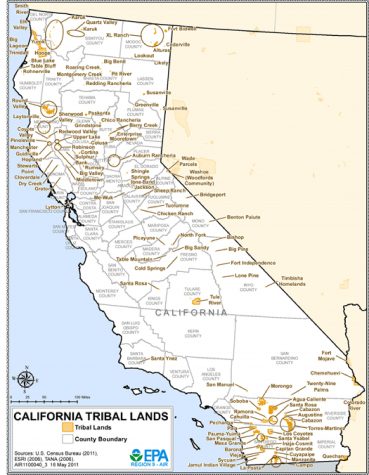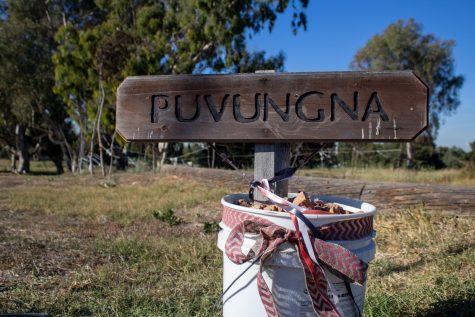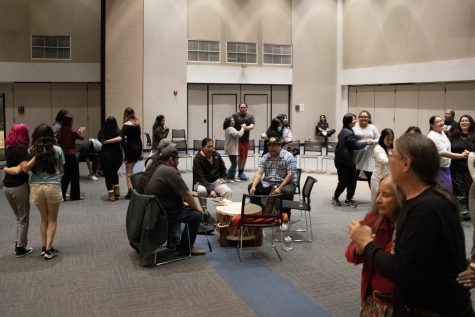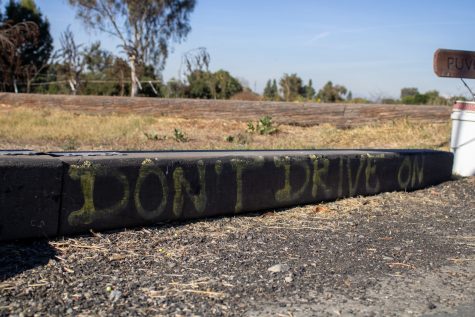At Long Beach State, land acknowledgments are read before major events and California Faculty Association (CFA) meetings. According to anthropology professor Ronald Loewe, these land acknowledgments serve to recognize Indigenous people as the original inhabitants of the land.
“The land acknowledgments [have] become so commonplace and so perfunctory that they kind of lose their meaning,” Loewe said.
“It’s like reciting a religious precept or statement that doesn’t have too much meaning, it’s just a prelude to whatever business follows.”
Kelly Stewart, an American Indian Studies (AIS) professor and a member of the Gabrielino-Tongva tribe, whose land CSULB resides on, shared similar sentiments.
“Every time someone does a land acknowledgment on my ancestral territory and I’m there, it’s a reminder to me that my ancestors who have been here since Creation, our lands are taken from us,” Stewart said.
According to emeritus AIS professor and program director Craig Stone, land acknowledgments at CSULB began under current President Jane Close Conoley.
Stone, along with Gabrielino-Tongva tribal members, was brought in to help create the first land acknowledgment that was read on campus.
“There are 109 federally recognized tribes in California, however, there are almost 80 other tribal groups, families that don’t have ratified treaties, who have petitioned for recognition from the state,” Stone said.
“So we will say, ‘Do you know where you stand?’ and literally, you don’t in California because California is linguistically and culturally the most diverse place in North America for thousands of years,” Stone said.
“Drive 60 miles in any direction, and you’re a visitor.”

In addition to being built on Gabrielino-Tongva land, CSULB is also the site of Puvungna. According to Stewart, Puvungna is the “site of creation” for the Gabrielino-Tongva people and where the tribe first emerged as a people.
“It’s the birthplace of a spiritual philosophy, of a religion that travels into Mexico and Arizona and throughout the desert,” Stone said.
“There’s no place like it because it has such an impact on all these different tribal groups throughout San Diego County, Orange County, even out into the desert.”

Beyond CSULB, Long Beach is considered Puvungna as well. “I feel this responsibility to protect the land,” Stewart said.
“That little parcel on the north side of campus, that’s not all of Puvungna, that’s what’s left of Puvungna, after development.”
Although the university has made efforts to form relationships with Native communities, Stewart says that the campus’ land acknowledgments are “very carefully crafted to not make promises to Indigenous communities.”
“There was never a treaty ratified of California Indians giving up the land, and the university and the CSU system is going to make millions of dollars off of students, but they’re not going to help the community that literally paid for everything, culturally, spiritually and sometimes physically,” Stewart said.
“These institutions are complicit and complacent in history.”
Others believe that in comparison to other college campuses built on Indigenous land, CSULB is far ahead regarding relations with local tribes.
“I think, Cal State Long Beach has always been ahead of the curve when it comes to issues pertaining to Indigenous nations,” said Thalia Gomez, director of Tribal Relations.
According to Gomez, CSULB has relationships with over six different tribes and consults with them on matters relating to Puvungna. Gomez shared her belief that land acknowledgments “should be the start of a conversation and not the end of a conversation.”
Stone encourages community members who want to help land acknowledgments have a greater effect to be aware that, “these are not lands that were paid for, these are lands that were taken.”
According to Stone, people can follow these three shows of allyship.
- Educate themselves on the history of the land they are on
- Be aware of issues affecting Indigenous communities
- Make their own personal land acknowledgment that reflect their values and beliefs
“Universities need to pause and say ‘What can I bring to dinner?’” Stewart said.
“Because they are in our house, but they’ve never asked us if they could bring a dessert.”

The Tongva word for guests is “Kuuyam.” Stewart encourages anyone on Indigenous land to be good Kuuyam.





